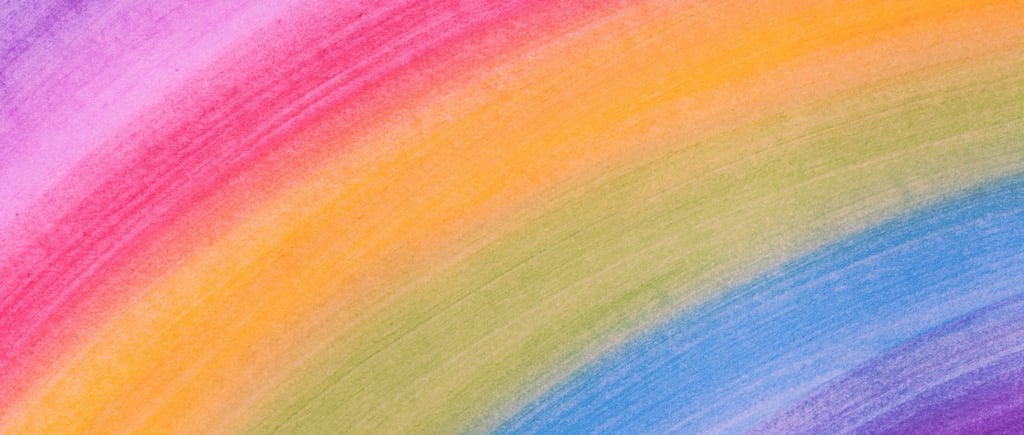The Theory of Love Styles
The Colors of Love: What’s Your Shade?
Heybie Writing Team
6/2/2024


Love has been one of humanity’s greatest mysteries since the beginning of time. It has been explored endlessly in literature, art, and science, as we try to define and understand it. But is there really a formula for love? Is the love I desire the same as someone else’s ideal?
Psychologist John Alan Lee offered a new dimension to our understanding of love by categorizing it through the metaphor of colors. Just as the rainbow is made up of three primary colors—red, yellow, and blue—Lee identified three primary love styles: passionate love (eros), playful love (ludus), and companionate love (storge). The combinations of these three create more complex, multi-dimensional forms of love. Lee’s colorful theory helps us better grasp love’s layered and intricate nature.
According to Lee, the primary “colors” of love are:
Passionate Love (Eros)
This type of love begins with intense physical attraction, where sexual intimacy plays a key role. Passionate lovers are often drawn to specific physical traits and are willing to take risks for love. Lee associates this type with the color red—symbolizing intensity, desire, and raw emotion.
Playful Love (Ludus)
Focused more on fun and less on commitment, this love is often short-term and open to multiple partners. Those who favor this style enjoy casual relationships and don’t seek specific physical traits. It’s linked with the color yellow, representing joy, spontaneity, and lightheartedness.
Companionate Love (Storge)
This love grows slowly over time, rooted in friendship, mutual care, and shared values. Physical appearance matters less than having shared interests and emotional connection. It’s symbolized by the color blue, reflecting trust, stability, and deep friendship.
These primary styles blend to form secondary love styles, or what Lee calls the secondary colors of love:
Practical Love (Pragma)
A mix of companionate and playful love, this type is based on logic and compatibility. Practical lovers seek long-term harmony, prioritizing their partner’s background, beliefs, and life goals. They believe in building sustainable relationships with a promising future.
Possessive Love (Mania)
Combining passionate and playful love, this style is marked by jealousy and insecurity. There's intense emotional dependency and fear of loss. Even in toxic dynamics, manic lovers struggle to walk away and suffer deeply after breakups. It has a slightly obsessive, even unhealthy, quality.
Selfless Love (Agape)
Born from the blend of passionate and companionate love, selfless love is all about giving. Agapic lovers prioritize their partner’s happiness above their own and expect nothing in return. For them, love is a duty and an act of generosity. They’re often forgiving, nurturing, and loyal.
By painting love in shades, John Alan Lee gave us a fresh lens to view its complexity. Every person’s experience of love is unique, and that diversity is exactly what preserves the magic of love. Just as there isn’t one color that suits everyone, there isn’t one kind of love that fits all. Just like people have color preferences, they can have different love preferences too, dear reader.
Love clearly adds color to life—and as we’ve seen, love itself comes in many colors. So, what’s your shade?
Source
Atak H, Taştan N. Romantic Relationships and Love. Current Approaches in Psychiatry. December 2012;4(4):520-546.
